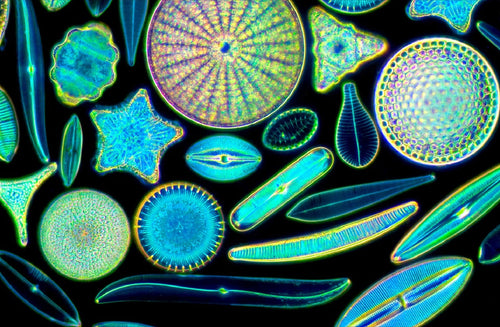
Diatoms - Nature’s Jewels viewed with a Microscope
Motic America
Diatoms are unicellular algae (Division Chrysophyta, Class Bacillariophyceae). Diatoms are microscopic in size, live in water, soil and moist en...
Read Article
Diatoms are unicellular algae (Division Chrysophyta, Class Bacillariophyceae). Diatoms are microscopic in size, live in water, soil and moist en...
Read ArticlePosted by Motic America on
To judge the performance of a microscope, the FIELD of VIEW (FOV) is a criterion of interest. What is this “FIELD of VIEW”?
In a technical sense, we are talking about the diameter of the INTERMEDIATE IMAGE, created by the objective or, in infinity systems, by the cooperation of objective and tube lens. This intermediate image is enlarged by the eyepiece, acting as a magnifying glass. The labelling of the eyepiece shows the actual FOV in combination with its magnification, e.g. 10X/23 for a standard 10X eyepiece with FOV 23 (1).

Especially in stereo microscopy, where large samples come as standard, a large FOV is appreciated for a better sample overview before going into details. But how much “more” do I see at a glance in a FOV 23, in comparison with a FOV 20? Is it worth to choose a more expensive model, or is the less expensive solution sufficient?

Trying to answer this question, we first have to calculate the area of the intermediate image by applying the formula for the circular area A= ¶ x r2 for both cases.
A = area of circular intermediate image (unit: mm2) r = radius of circular intermediate image = 0.5 x FOV A1 = ¶ x r12
A2 = ¶ x r22
A1/A2 =¶x11,5mm2 /¶x(10mm)2 =1,322
This calculation reveals a 32.2% larger intermediate image in the FOV23; 32.2% more information in com- parison to a FOV20 setup.
Now it comes to the sample itself. “My sample has a diameter of 30mm, is it possible to see it in total”? With a given FOV, every microscope user is able to work out quite easily the visible sample area with a particular objective.
FØ = visible sample area (Ø in mm) FØ = FOV / MagObj.
Based on this formula, the microscope manufacturer
present detailed information about the visible sample area 4 F (Ø in mm) (4).

Following this chart, the standard configuration of Motic’s SMZ171 offers an area of 30.7mm Ø at a glance. The total magnification in this case is 7.5X. By adding auxiliary objectives < 1X magnification, this area can be enlarged up to an area of 102mm Ø.
This kind of approach is also valid for compound micro- scopes. Motic’s BA410E, combined with the low power objective EC-H PL 2X/0.05 displays a sample area of 22/2 = 11mm Ø, roughly the size of a thumbnail. For pathology this is interesting, but also in botany or zoology this combination may be useful as it represents a “missing link” between macro and micro observation.
Humans tend to follow the idea “the more the merrier”. Basically this idea is also applied for the FOV. But there are limitations. A FOV 28 may be impressive from the technical side (think about the field flatness), but overburdens the human eye: the eyes have to “roll” in order to cover the whole visible area.
In a modern sense, this is far away from being ergonomic and will exhaust the eyes quite soon.
Related Products
| Models | ||
| Features |
SMZ-171 is a flexible stereo microscope for advanced research work in biomedicine and industrial quality control. |
The BA410E allows a profound diagnosis in pathology, hematology, and cytology with their requirements for best color fidelity. |
Want to know which microscopes fit you best? Fill in the form below and our specialists are glad to help!